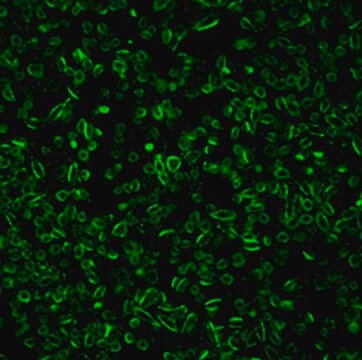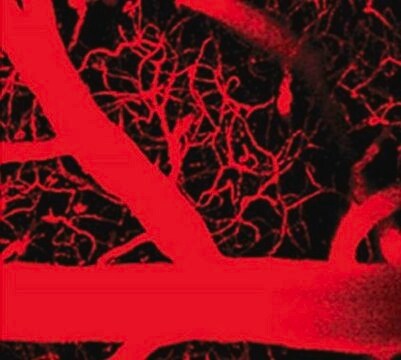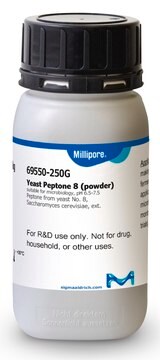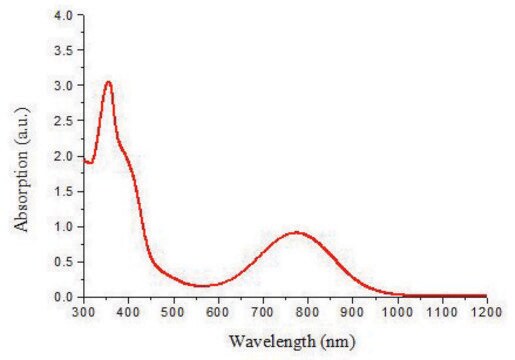SCT012M
LuminiCell Tracker 540- Vascular Labeling Kit
Biocompatible organic fluorescent nanoparticles (AIEDots) that can be used to fluorescently tag vasculature in living tissues and animals for studies of inflammation and vascular leakage.
Synonim(y):
AIEDots Cell Tracker Dye, AIE Live Cell Fluorescent Dye, Fluorescent Cell Tracking Dye, Live Cell Fluorescent Nanoparticles
About This Item
Polecane produkty
Opis ogólny
Emisson Maximum: 540nm
Suggested Filters:
Excitation: 405/458/488nm
Emisson: 480-560nm
The Luminicell Tracker<TMSYMBOL></TMSYMBOL>-540 Vascular Labeling Kit contain green fluorescent AIEDots nanoparticles without TAT sequences. These nanoparticles can be used to fluorescently tag vasculature in living tissues and animals for studies of inflammation and vascular leakage.
Features and Benefits
● Brighter: 10X brighter than other cell labeling technologies
● Photostable: 3X longer fluorescence without signal quenching
● Biocompatible: Non-toxic organic nanoparticles intended for biological applications
● Rapid Protocol: Easy-to-use protocol labels cells within 4 hours
Zastosowanie
Jakość
Concentration: 180-220nM
Fluorescence: 540+/- 10nm
Quantum Yield: ≥50%
Brightness at 540nM: ≥3X10^7 M-1cm-1
Postać fizyczna
Przechowywanie i stabilność
Note: Some particulates may form as a result of nanoparticle aggregation during shipping. To get particulates back in solution, sonicate the vial containing LuminiCell Tracker three times for 1 min each before use.
Oświadczenie o zrzeczeniu się odpowiedzialności
Kod klasy składowania
12 - Non Combustible Liquids
Klasa zagrożenia wodnego (WGK)
WGK 2
Temperatura zapłonu (°F)
Not applicable
Temperatura zapłonu (°C)
Not applicable
Certyfikaty analizy (CoA)
Poszukaj Certyfikaty analizy (CoA), wpisując numer partii/serii produktów. Numery serii i partii można znaleźć na etykiecie produktu po słowach „seria” lub „partia”.
Masz już ten produkt?
Dokumenty związane z niedawno zakupionymi produktami zostały zamieszczone w Bibliotece dokumentów.
Produkty
Biocompatible organic fluorescent nanoparticles (AIE Dots) that can be used to label cells and vasculature for long-term live cell tracking and tracing experiments.
Nasz zespół naukowców ma doświadczenie we wszystkich obszarach badań, w tym w naukach przyrodniczych, materiałoznawstwie, syntezie chemicznej, chromatografii, analityce i wielu innych dziedzinach.
Skontaktuj się z zespołem ds. pomocy technicznej







